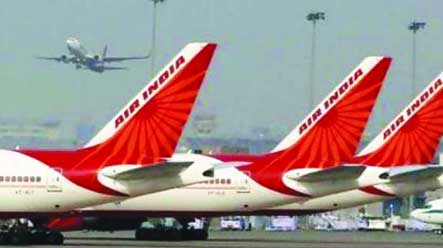Air India becomes first Indian airline to take the Arctic fly path and save us miles
At a time when its privatisation and strategic disinvestment only highlight the morass our national carrier has crashed into, Air India has done the country proud by conquering an uncharted path. On Independence Day, it became the first Indian airline to fly over the North Pole, making the world look much smaller than before and in climate-challenged times, minimising carbon footprints and cutting costs on aviation fuel. An Air India flight first flew over the North Pole 13 years ago when Captain Amitabh Singh took an unconventional flight path after taking the delivery of a brand new aircraft and bringing it back from Seattle to New Delhi. The difference this time round was that AI 123 from Delhi to San Francisco had 243 passengers, making it a fully commercial flight. This may just be one of the last laurels to the Maharaja’s credit before it unburdens the state exchequer and parcels itself to private players. But the silver lining is that in its supposedly last feat, it has achieved a new aviation milestone by adopting one of the oldest tricks, one used by many international carriers, to give the passengers the bonus of not only smoother flights but also some breathtaking views of the vast sheets of Arctic ice. So now, instead of flying over Bangladesh, Myanmar, China and Japan before crossing the Pacific to reach the US, the aircraft would fly over Kyrgyzstan, Kazakhstan, Russia, the Arctic Ocean, Canada and then descend in the US, thus cutting travel time by 90 minutes. On the Atlantic side, we do not have to bother about the frequent closure of the Pakistani airspace. The advent of this transpolar flight also offers multiple benefits ranging from a reduction in fuel consumption cost to reduction in damage to the environment. Statistically, it is expected to yield fuel savings in the range of 2,000 to 7,000 kg per flight and also reduce carbon emission — in the range of 6,000 to 21,000 kg, per flight.
However, flying commercial jets over the Arctic Circle comes with its own risks and herein, lies the challenge. Pertinent among them relate to passenger’s safety infrastructure and logistics. Thanks to technological advancements, what was once considered to be too challenging a path is now being conquered by newcomers. The area of magnetic unreliability, limited choices for diversion to alternative airports, solar radiation, fuel freezing possibilities, passenger and aircraft retrieval in case of diversions, are some specific factors requiring active mitigation to ensure equivalent levels of safety. Specialised crew training, weather monitoring, alternate selection and aircraft serviceability, too, will have to be of the highest standards to ensure viable operations.


























